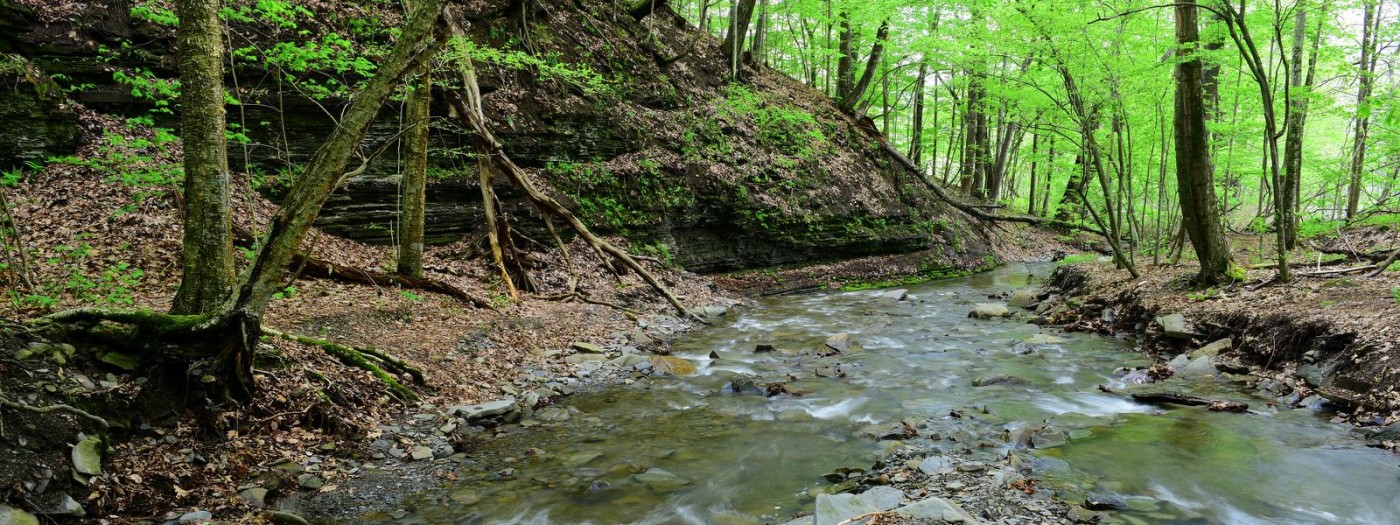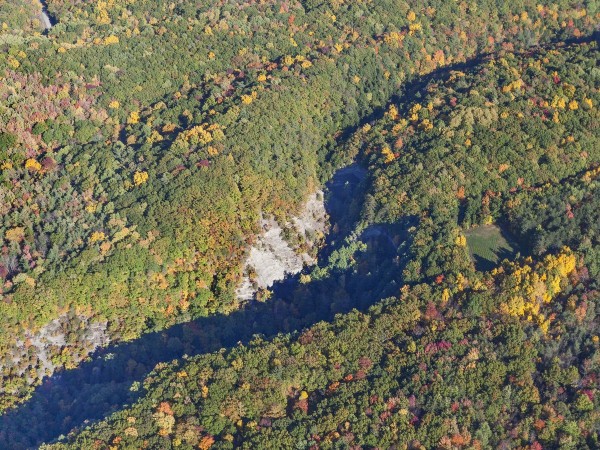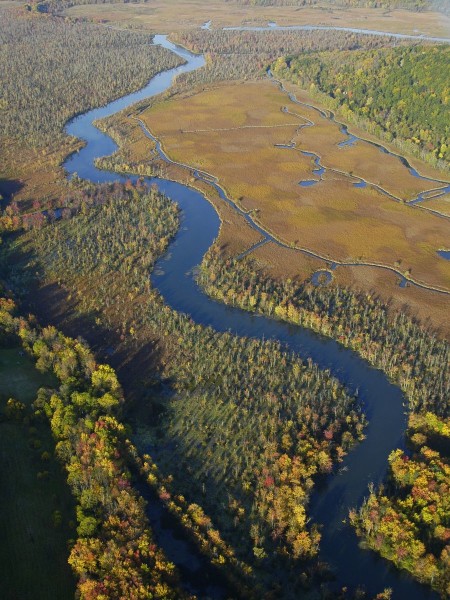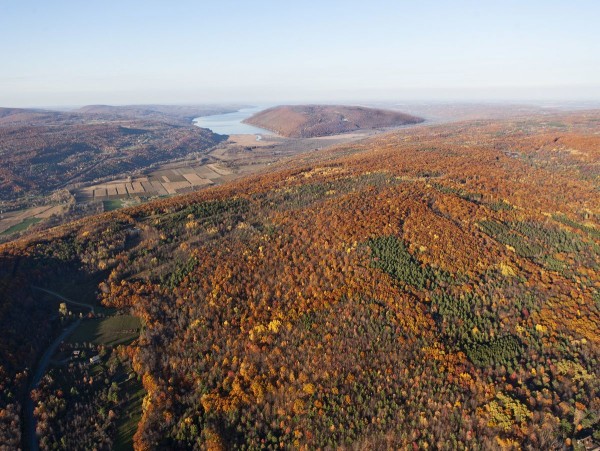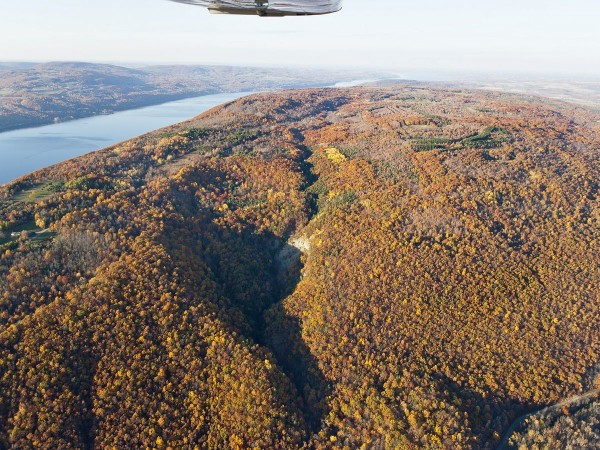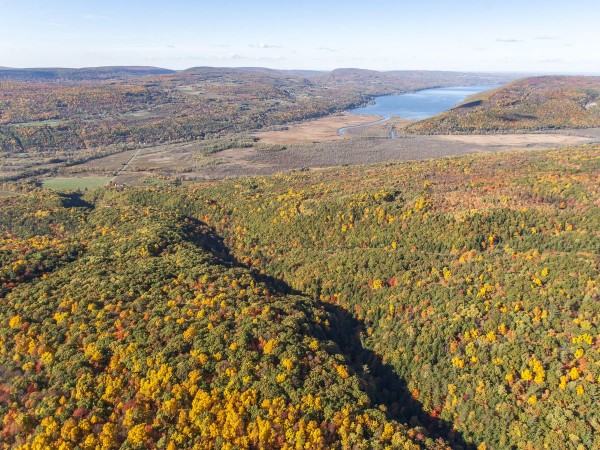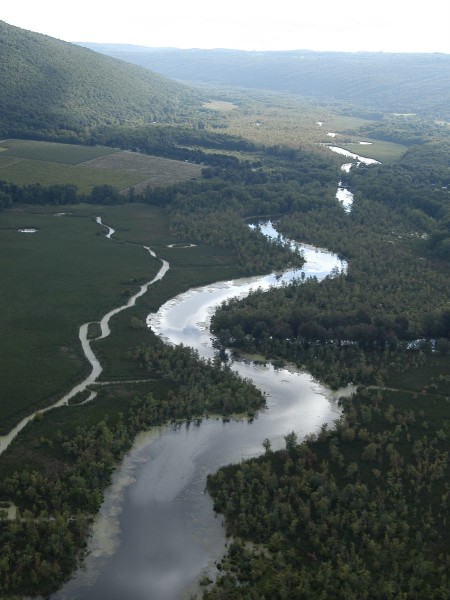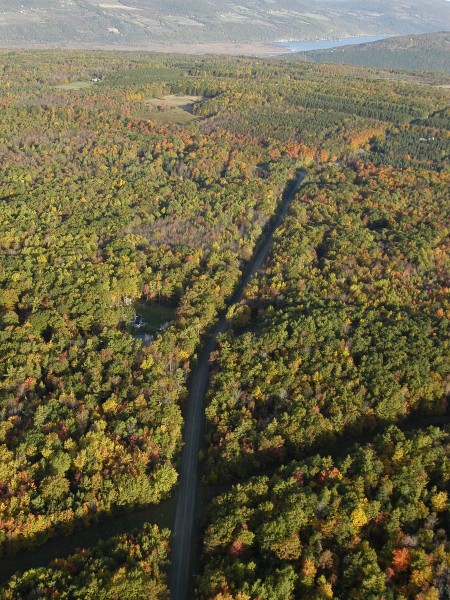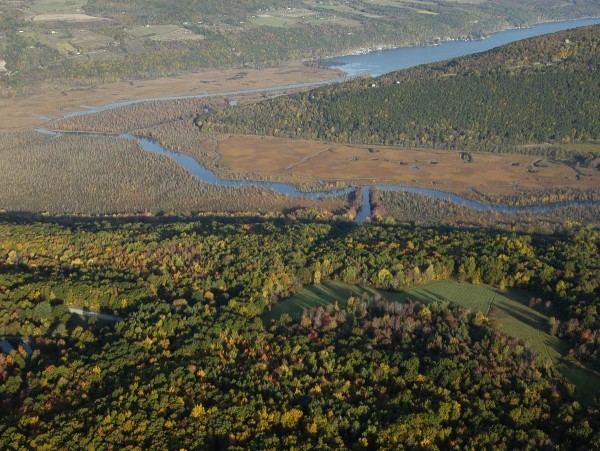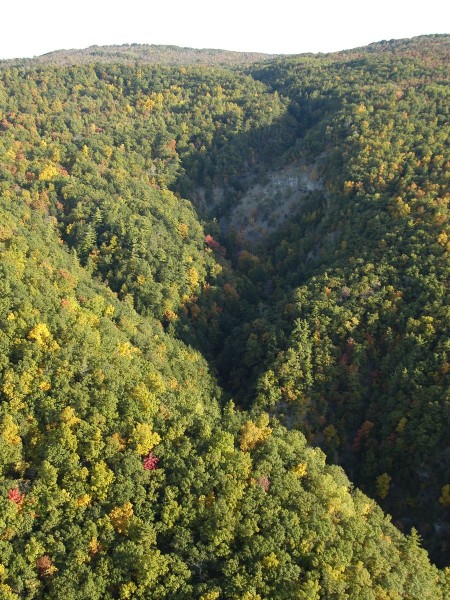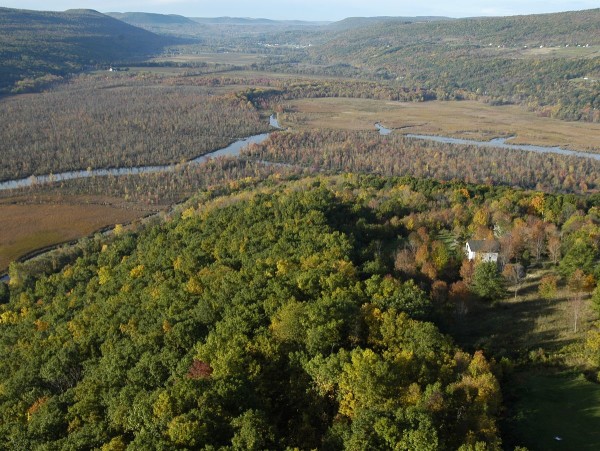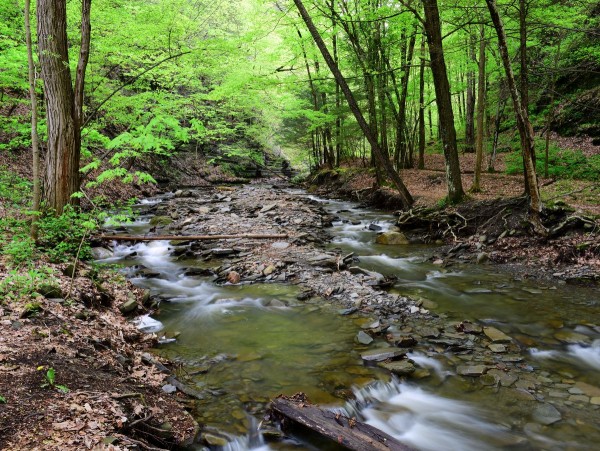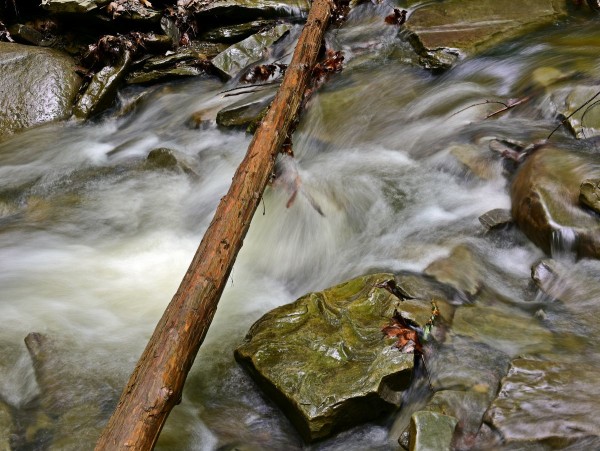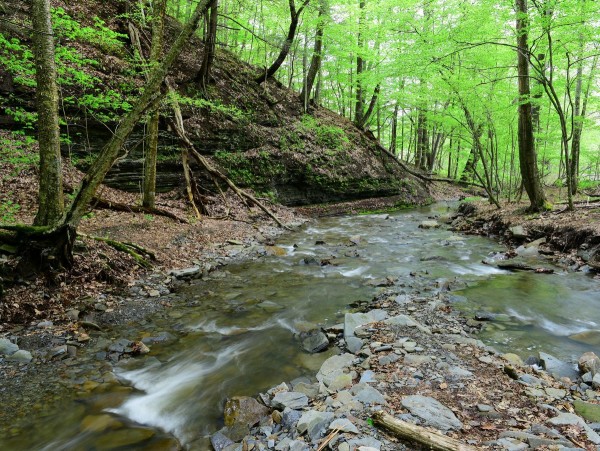Opportunities abound for all types of outdoor enthusiasts at the High Tor Wildlife Management Area (WMA): paddling along the West River, cycling along the Lehigh Valley Rail Trail, and, of course, hiking and biking the expansive upland plateau. And you can’t leave out creek walking and gorge exploration in Conklin Gully-Parish Glen and Clark Gully. With ponds, waterfalls, rivers, gorges, forests, and open fields, there is an abundance of outdoor experiences waiting within the 6,800-acre wildlife management area.
There are over a dozen miles of hiking trails as well as a network of access roads in the 3,400-acre upland portion of High Tor WMA. No matter which approach you choose to reach the upland site, the climbing is steep. But, once you reach the top, the hiking and biking are fairly level.
The trail network is a mixture of access roads and rugged worn footpaths that wind their way through open fields and dense woodlands with the occasional wooded glen and pond to spice up the experience. The trail system is also a part, albeit only a short section, of the more extensive Bristol Hill Trail, a branch trail of the even longer Finger Lakes Trail (FLT). Backpackers and thru-hikers should note that as a wildlife management area there is no camping within the unit. The one exception is group camping for youth groups, such as boy scouts, which requires a special permit. The best trail map for the area is available from the Finger Lakes Trail Conference and can be purchased individually or as part of a package that includes the entire vast FLT network, a staggering thousand miles and counting.
Conklin Gully, a recent addition to the WMA, is adjacent to the upland unit and near two of its major access points (the parking area along NY 245 and the upper parking area along Parish Hill Road). The only formal trails that explore this gully follow the rim and have several stunning scenes of the gorge and Angel Falls. The more adventurous and sure-of-foot can creek-walk the gorge. Expect to get your feet wet along this unmarked scramble and be cautious of slippery and high water conditions.
A Seneca legend tells that within this gully is a crevice from which their ancestors emerged to populate the earth.
Another creek walk, along a slightly more formal trail, explores Clark Gully in the South Hill Unit. This unit is adjacent to the West River Unit on the north side of NY 245 and is accessed via a parking area along Sunnyside Road. The gully features two smaller waterfalls that are safely accessed. A Seneca legend tells that within this gully is a crevice from which their ancestors emerged to populate the earth.
Over four miles long, the meandering West River, as well as trips along tributaries, provides ample paddling in an almost idyllic landscape. Tall cattails and thick lily pads carpet the banks throughout the 1,700-acre marshland. Surrounded by forested, over-steepened hillsides, the river and vast wetlands are truly peaceful and a world unto themselves. In fact, paddling up the West River to the developed shores and loud motors on Canandaigua Lake feels a bit like stepping forward in time as the wilderness cedes to civilization. It is akin to Adirondack paddling trips and a true testament to how removed the river and wetlands actually feel. Ambitious paddlers can explore the lake itself, but be advised strong north-south winds often fill the center of the lake with tall waves. Various car top launch points are available along the river as well as on the southwest corner of Canandaigua Lake.
This treasured flat water marsh provides ideal habitat for largemouth bass, which literally jump out of the water during the spring feeding frenzy. Rainbow trout are also known to have remarkable spawning runs along the river. Fishermen, of both human and avian varieties, flock to the river for a chance to catch the abundant fish. There is virtually no doubt that herons and other predatory birds will be seen fishing the banks of the river and often up close for excellent photo ops. No doubt the rich habitat and all the wildlife it supports is why the Audubon Society has recognized the West River and the High Tor WMA as an Important Bird Area (IBA).
There really is too much to do within the High Tor complex and several visits will be needed to take in all the sites and activities.
Mountain biking throughout the upland plateau provides extensive and challenging opportunities. After a grueling climb to the plateau, dozens of miles of interconnected gravel access roads can be enjoyed in multiple loops that wind between forest and field.
For those looking for an easier adventure, though no less scenic, you could hardly go wrong cycling along the Lehigh Valley Rail Trail, sometimes referred to as the Middlesex Valley Rail Trail. Like so many repurposed industrial corridors, the route follows an abandoned rail line, and as such the path is mostly level with a stable broad base. The nearly 10 miles of trail parallels NY 245 and passes through the West River Section of the WMA, providing those without a boat the opportunity to see the West River gem as well.
There really is too much to do within the High Tor complex and several visits will be needed to take in all the sites and activities available. Should your need for excellent outdoor destinations still be unquenched, there are the rugged trails nearby at the Great Hill (Nundawao) Nature Preserve of the Finger Lakes Land Trust and another amazing creek walk at Grimes Glen.

